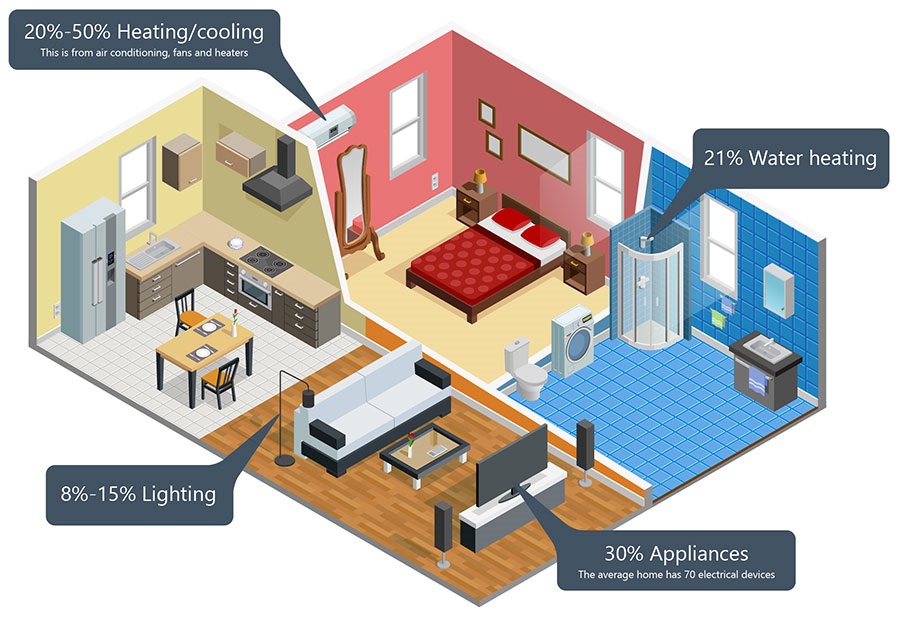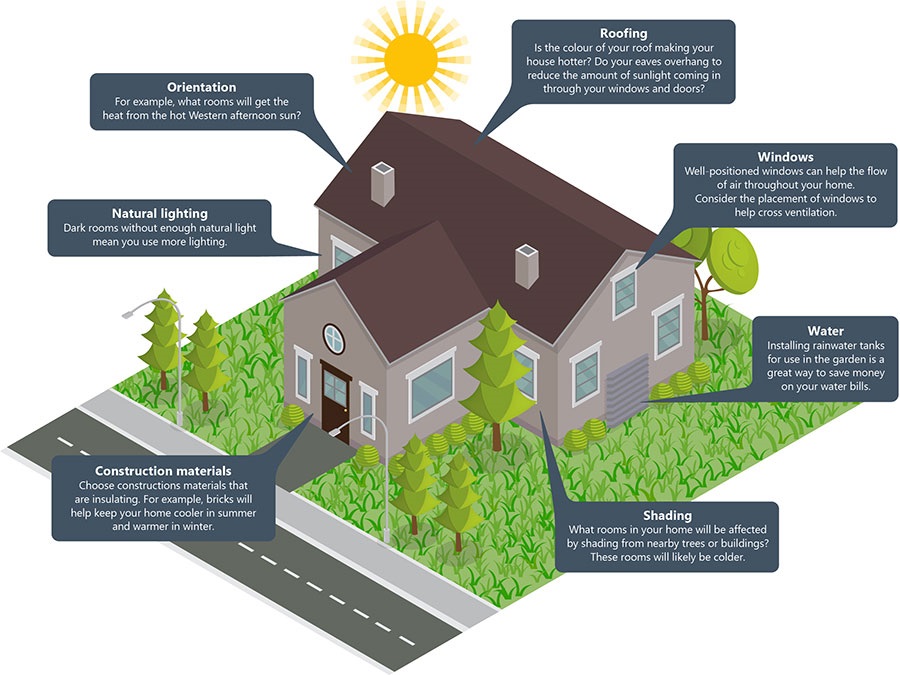Energy Efficiency at Home
Households consume energy through electricity and gas. Twenty per cent of Australia’s greenhouse gas emissions come from household energy use. Reducing energy use in your home can save money and help our environment.

Are you building a new home?
If you are building a new home, think about how your home’s design will impact on how much energy you use.

Save energy – and money! – in your existing home
In the laundry
- Wash clothes in cold water
- Hang your washing on the clothes line instead of using a dryer
In the kitchen
- Use the microwave oven, as they use less energy than an oven
- Make sure your fridge and freezer door seals are in good shape
- Place fridges in well ventilated areas
- Keep lids on pots when cooking
In the bathroom
- Use low flow shower heads and take shorter showers
Heating and cooling
- Close curtains and shade windows during summer days to keep heat out
- Use window and door draft stoppers
- Gas heaters and reverse cycle air conditioners can be more efficient than electric heaters
- Use ceiling fans before air conditioners
- Set air-conditioning at 25oC in summer and 18oC in winter
- Shut doors and windows when using air conditioners
Swimming pools
- Use economy tariffs for pool pumps
- Reduce daily pumping time, where possible
- Install an energy efficient pool pump
Lighting
- When replacing light bulbs, consider LED bulbs. They last 10 times longer than fluoro bulbs and 25 times longer than standard bulbs
- Turn off lights when not in use
General
- Install a solar system to reduce power bills and increase the value of your home
- Replace old electric hot water systems with solar hot water
- Consider buying accredited Green Power
- Turn equipment off when not in use, preferably at the power outlet (or use a stand-by power controller). When appliances are not in use, they still use energy in ‘standby’ mode. Appliance in stand-by mode can make up 10 per cent of the average household’s energy use and cost $100 a year.